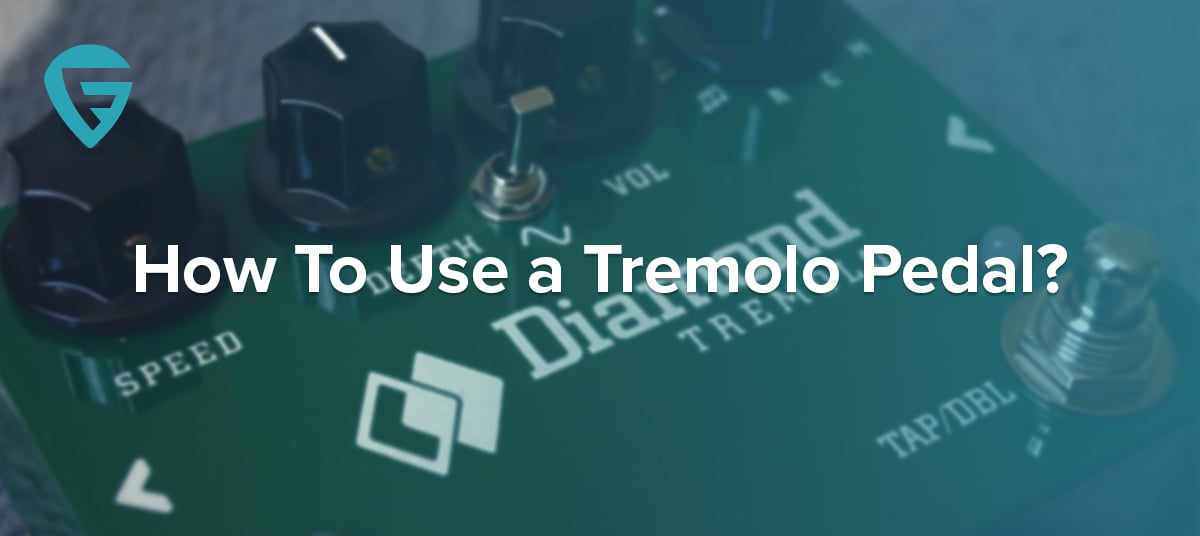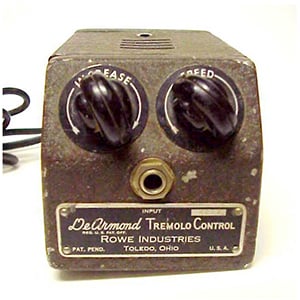- Home
- Instruments
- Gear
- Recording
- Lessons
- Reviews
- Blog

Our title might seem a bit weird to some more experienced guitar players, but the truth is that there's a lot of people out there who simply don't know how to properly use a tremolo pedal. Tremolo is one of the most basic guitar effects you can have. Without going too deep into how it works, we are just going to say that it produces an effect you would get if you were to rapidly lower and increase your volume.
Since no human is that fast nor capable of playing notes while doing this, we have tremolo pedals which take care of that for us. If you'd like to know more about how tremolo pedals work, check out our piece that deals with this subject in depth ‘How Does a Tremolo Pedal Work?'.
Despite its simplicity, tremolo is one of the most demanding effects pedals you can come across. It takes a lot of finesse to properly implement it in your music, without completely ruining the song. If you think this is an overly dramatic statement, you should give a tremolo pedal to a complete newbie and see how that goes. Today we are going to talk about different aspects of tremolo, and what you need to know if you want to include this effect into your performance without making a mess.
 No matter which tremolo pedal you decide to go for, they all share two common denominators. These are your Speed and Depth control. Speed and Depth are essential parameters of the tremolo and are deeply rooted in the nature of this effect. Both the best tremolo pedals and the most basic one will have these two controls. If you were to draw a tremolo signal on a graph, it would look like a standard sine wave.
No matter which tremolo pedal you decide to go for, they all share two common denominators. These are your Speed and Depth control. Speed and Depth are essential parameters of the tremolo and are deeply rooted in the nature of this effect. Both the best tremolo pedals and the most basic one will have these two controls. If you were to draw a tremolo signal on a graph, it would look like a standard sine wave.
There are two main values to this wave – amplitude and frequency. Amplitude is going to be the distance from the highest and lowest point on the graph, while frequency is going to signify the number of times the wave goes from its highest point to its lowest in a given amount of time. If there's an electrical engineer reading this, you're probably rolling your eyes at our explanation of a wave, but it's pretty much on point.
Your Speed control will affect the frequency of the wave, while Depth control determines the amplitude. Depth is not that important and comes down to personal preference, but Speed is the one that can get you if you don't know how to use it properly.
![]() So what does Speed, or should we say frequency, have to do with how you use the tremolo pedal? It's simple. You need to match the Speed value to the tempo of your song. If you don't, you are going the get the same effect as if you were playing out of tempo yourself. The thing with tremolo effect is that it adds another rhythmic component to your music. It's no longer enough for you to play on point, but you also need to adjust the tempo of the tremolo as well.
So what does Speed, or should we say frequency, have to do with how you use the tremolo pedal? It's simple. You need to match the Speed value to the tempo of your song. If you don't, you are going the get the same effect as if you were playing out of tempo yourself. The thing with tremolo effect is that it adds another rhythmic component to your music. It's no longer enough for you to play on point, but you also need to adjust the tempo of the tremolo as well.
Most basic tremolo pedals will require you to dial this in by feel. That is definitely something that takes a bit of practice. The easiest way to do it is to ask your drummer to lay down the beat while you adjust the tremolo. You can match the beat 1:1, go faster or go slower. That is completely up to you, but it needs to be in synch with the rest of the band.
Modern tremolo pedals come with tap tempo feature that significantly simplifies this process. You just tap the designated switch in rhythm with your song, and the pedal will do the rest of the work for you. Models which come with this feature usually cost a bit more, so we suggest you learn how to do it the old fashioned way just in case.
You're probably wondering why we focused most of this short guide on adjusting Speed, without even mentioning some of the more advanced tremolo features. The reason is simple. If you don't understand what Speed control does, or how to use it, you can do more damage than good when using a tremolo pedal. All of the more advanced features can't have this kind of impact and are something you can figure out on your own. This is especially true considering that each tremolo pedal comes with its own set of controls that are often times unique to that specific brand.
Being able to properly adjust the frequency of the tremolo effect is essential to using this effect. As we have mentioned above, working with your drummer is the best way to do this with little to no effort. If you are alone, things get a bit more complicated but you can still adjust the speed by using a metronome or just your own sense of the tempo.

Reader Interactions